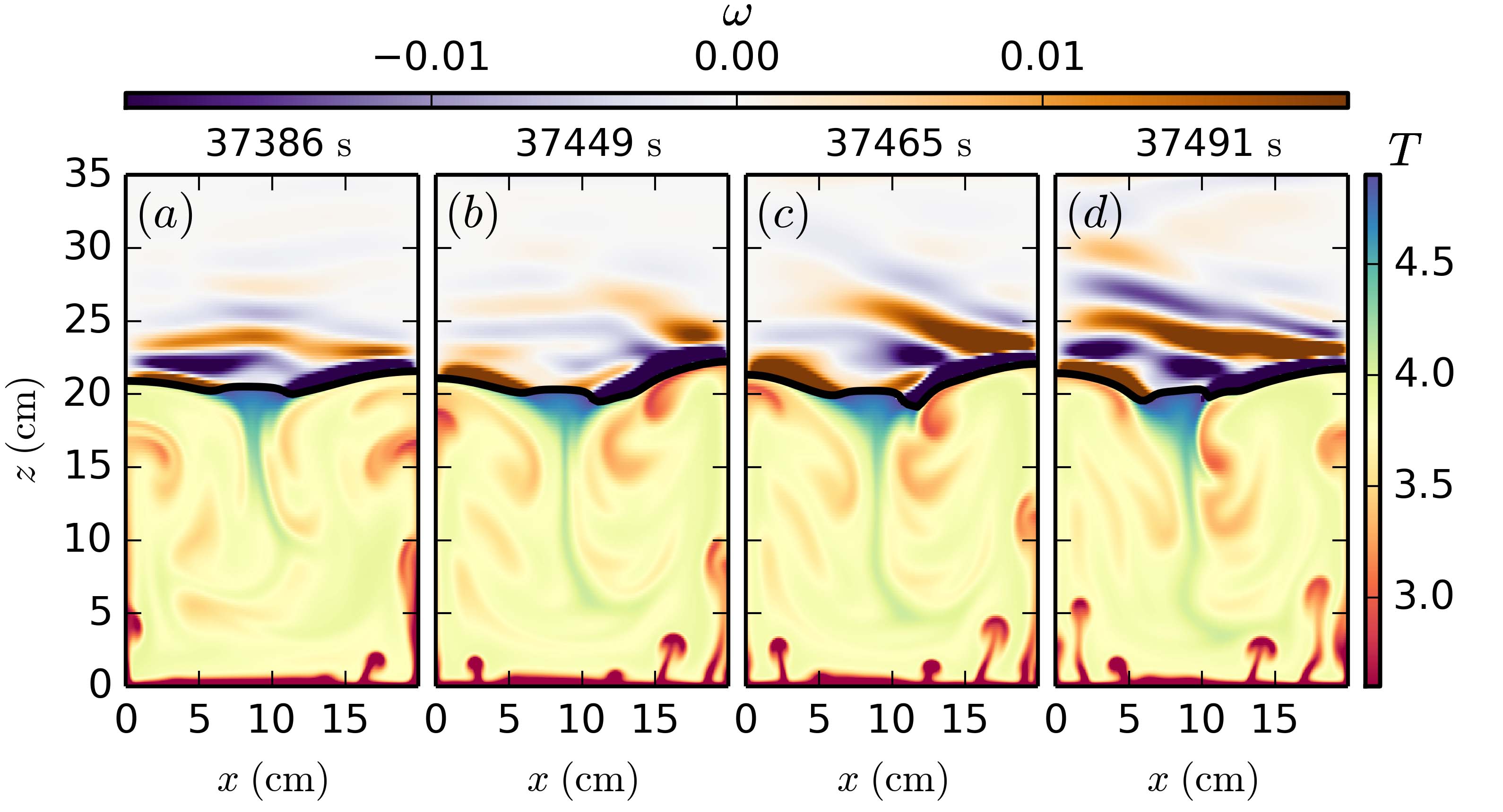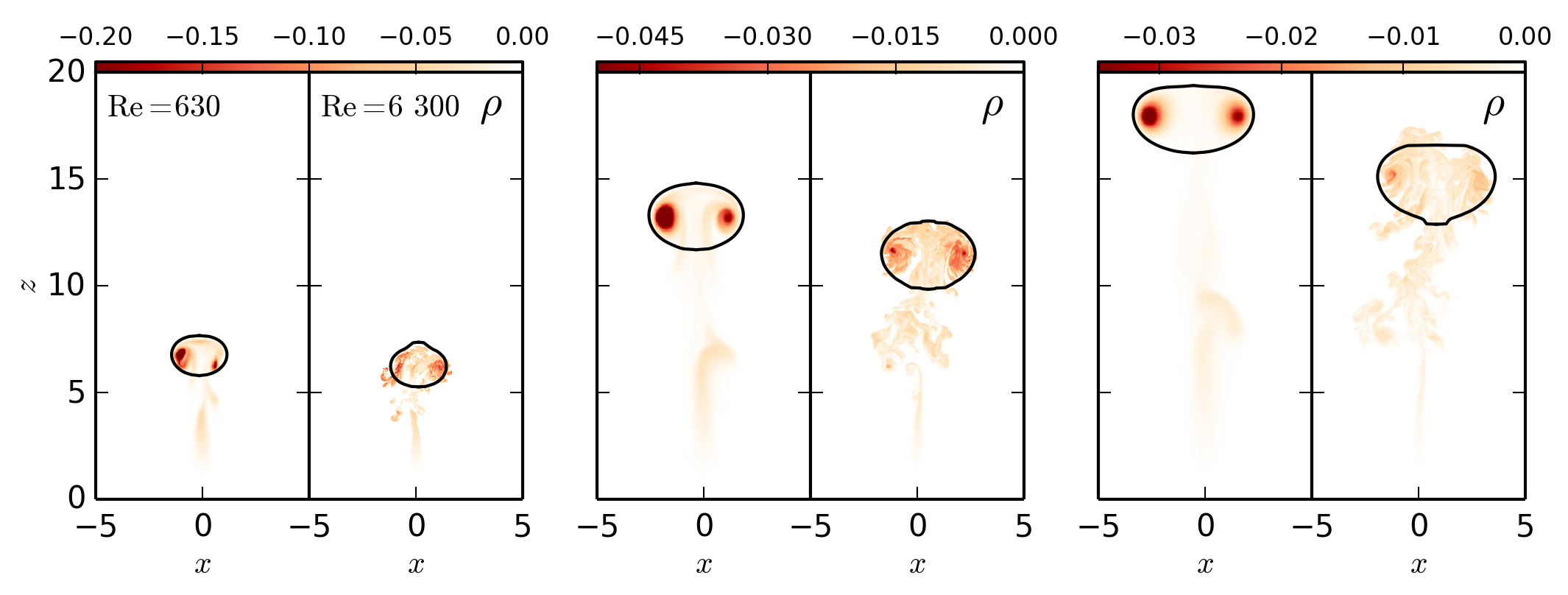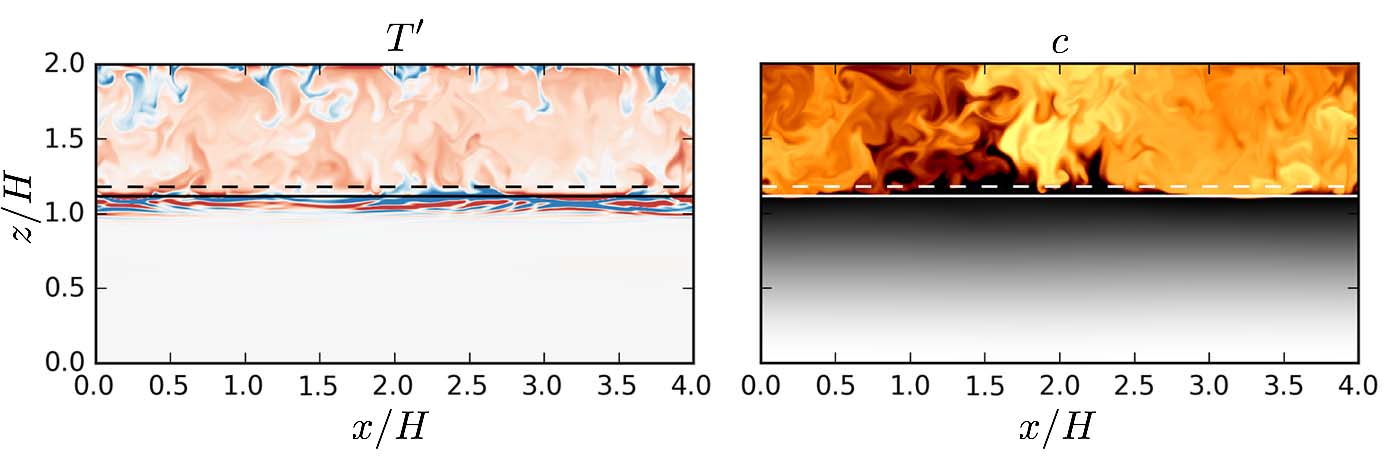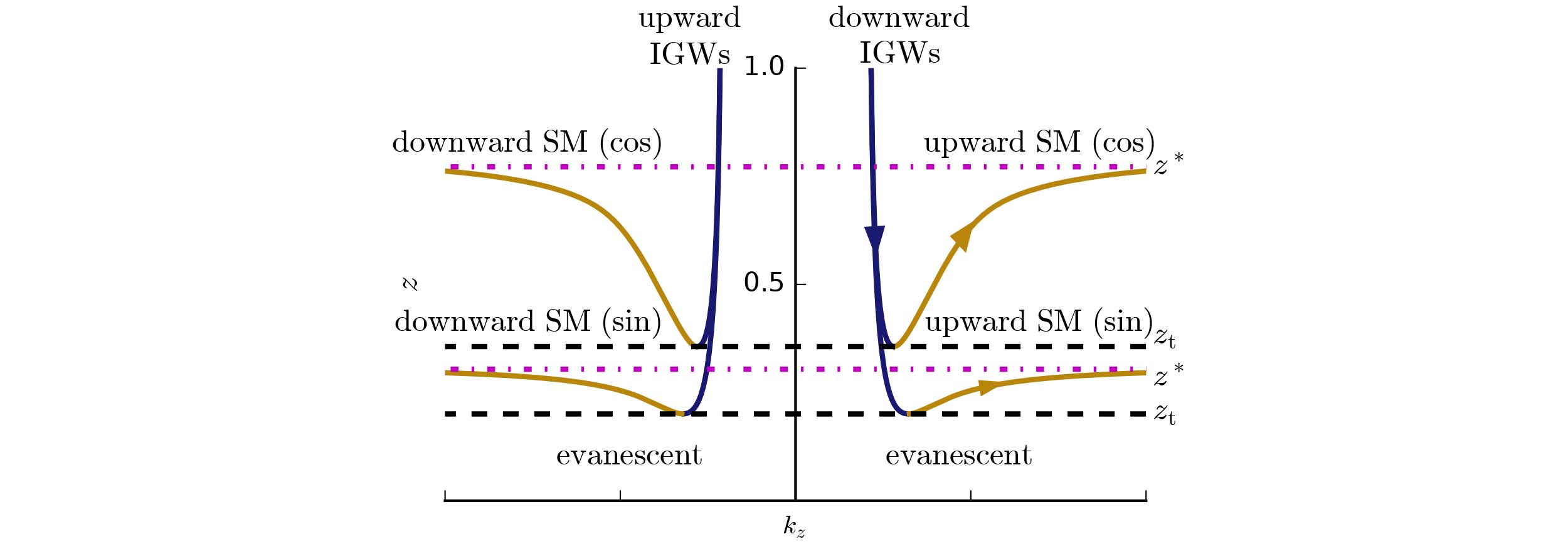Convective wave generation

Whenever a convective fluid layer is adjacent to a stably-stratified layer, the convection can excite internal gravity waves which propagate in the stably-stratified layer. This occurs in stars, in the Earth's and other planet's atmosphere and oceans, and in planetary cores. Our work has shown that waves are generated in the convective zone via stresses, and then propagate out into the stably-stratified layer. We have developed and tested expressions for how the wave energy flux depends on the properties of the convection. We are currently exploring how waves generated by convection in stars may manifest at the surface.
Thermals

A thermal is created by the release of a finite volume of buoyant fluid. It is a model for convection in the atmosphere, and can also be used to study stellar convection. We have shown that a thermal's evolution is strongly influenced by its impulse, which increases in time due to buoyancy. This can be used to study the entrainment of ambient fluid into the thermal as it rises. We find the entrainment is predominantly due to buoyancy, not turbulence, for dry thermals. The release of latent heat due to condensation of water vapor may change the picture for moist atmospheric thermals.
Convective boundary mixing

Mixing occurs at the boundary of a convective region. The mixing can be change the size of the convection zone ("entrainment" or "penetration") and it can mix material from an adjacent stably-stratified layer into the convective region ("overshoot"). These processes depend on the relative strength of convection and the stable stratification. A major goal is to develop a parameterization of entrainment, penetration, and overshoot that can be implemented in 1D stellar evolution models.
Wave mean-flow interactions

The nonlinear interactions between waves can generate mean flows. This occurs in the atmosphere, where waves generated by convection in the tropics propagate into the stratisphere and generate the "quasi-biennial oscillation." This oscillation is currently used as a sensitive test of wave parameterization schemes in global circulation models. However, the detailed driving mechanism of the QBO is still not well understood: Why is it so regular despite the large Reynolds number of the atmosphere? Similar phenomena have also been observed in planetary atmospheres, and may also occur in stars.
Wave conversion

If waves propagate in a variable background medium, the wave properties will adjust according to the background. In particular, waves can convert between different solution branches. One example of this is the conversion of internal gravity waves into magnetic (slow-magnetosonic) waves when they propagate into a region of either strong magnetic field, or large buoyancy frequency. Conversion of internal waves into magnetic waves may explain observations of low-amplitude dipole modes in some red giant branch stars.
Dedalus

Dedalus is a pseudo-spectral code that can solve nearly arbitary partial differential equations. The user specifies the equations they wish to solve in plain-text. The latest verison of Dedalus can solve equations in cartesian, cylindrical, and spherical geometry. The equations are specified using vector notation (e.g., using div, grad, etc.). In cylindrical and spherical geometry, which contain coordinate singularities, each variable is represented using scaled Jacobi polynomials which automatically satisfy the appropriate regularity conditions at each of the singular points. Find out more here.
Solar magnetism

The origin of the solar magnetic field is one of the oldest unsolved problems in the physical sciences. We are investigating the solar near-surface shear layer as a possible generation site for the solar magnetic field. The shear here is stronger than in the tachocline region by a factor of two, and has a negative sign. Negative shear is a key prerequisite for the magnetorotational instability, which should be present in the outer layers of the sun.